Cheery Families, c.1893
Cheery Families card game designed by Richard Doyle and printed by De La Rue & Co., Ltd, c.1893
Cheery Families by De La Rue & Co., Ltd, c.1890
Designed by Richard Doyle (1824-1883) and registered in 1893, the game was first issued with either dark green or pale green backs. This is De La Rue's contribution to the 'Happy Families' genre which had become popular following the publication of Jaques' Original Happy Families in c.1850. Richard Doyle also designed “Stop Thief” and “Spin & Old Maid” card games for De la Rue.
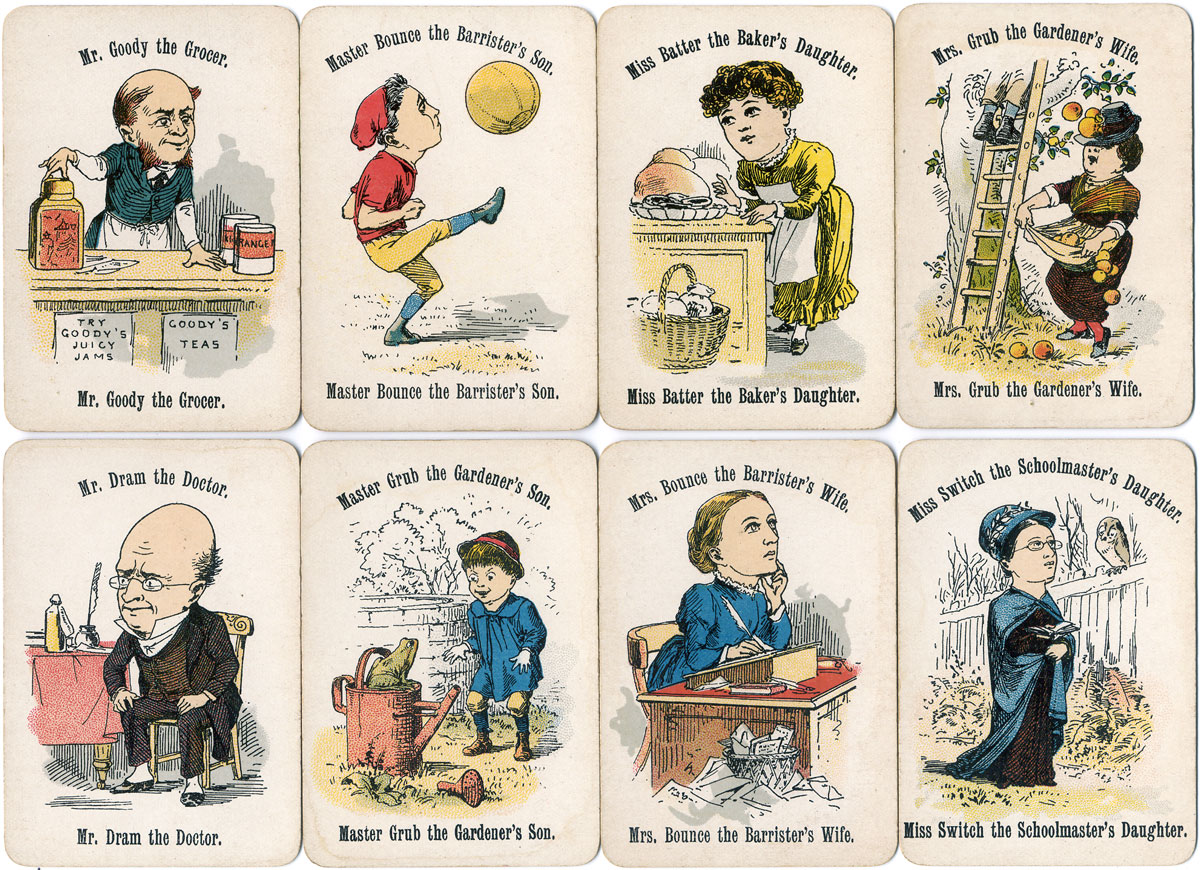
Above: eight cards from 'Cheery Families' card game printed by De La Rue & Co., Ltd, c.1893. 52 cards, 13 families of four cards each. The initials R.D. appear on Mr Grub the Gardener's flowerpot, which stand for Richard Doyle (1824-83), the humorous artist, cartoonist and illustrator.
Richard 'Dick Kitcat' Doyle (1824-1883) was uncle to Sir Arthur Conan Doyle. He was a gifted artist and began from an early age to illustrate juvenilia and books for family circulation. He went on to illustrate for Dickens, Thackeray, Ruskin and Punch magazine and became almost a household name. Doyle's cover design for Punch was used until 1954.
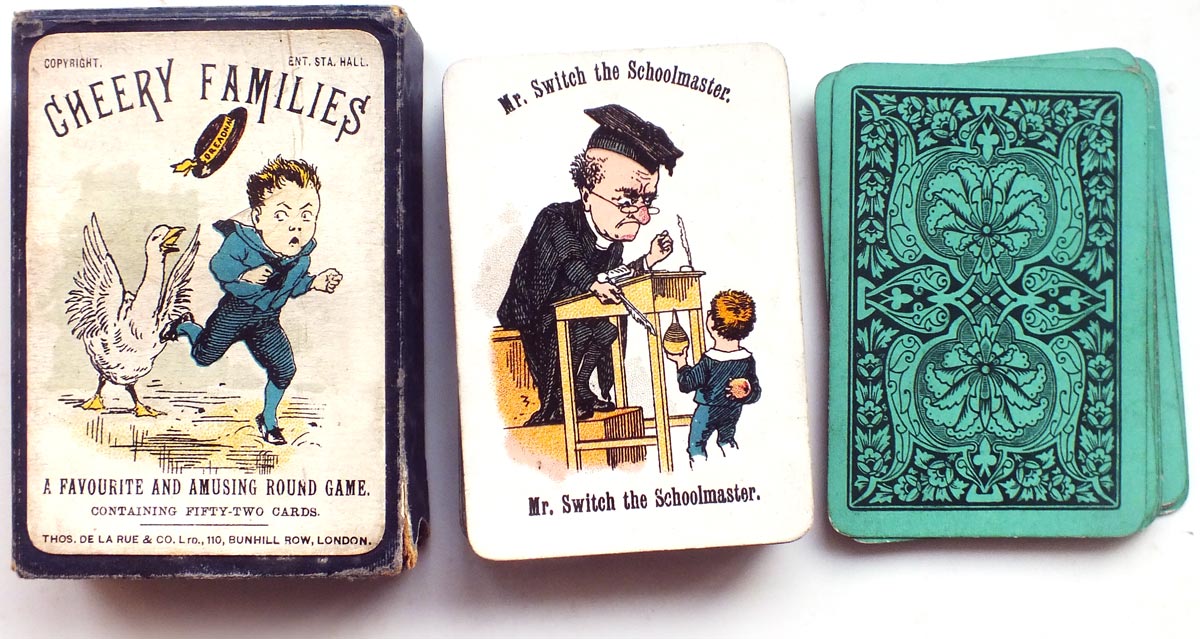
Above: the box.
Later Editions
In the late 1930s Gibson published a red and black version, renamed “Happy Families”, with blue pattern backs in 24 and 44 card editions. At some time near then Gibsons also published a 52 card edition for Marks and Spencer with the complete set of all the original characters (in the red and black colours) and a jazzy new back design. The same treatment was also applied to the De La Rue Snap cards contemporary with the Cheery Families.
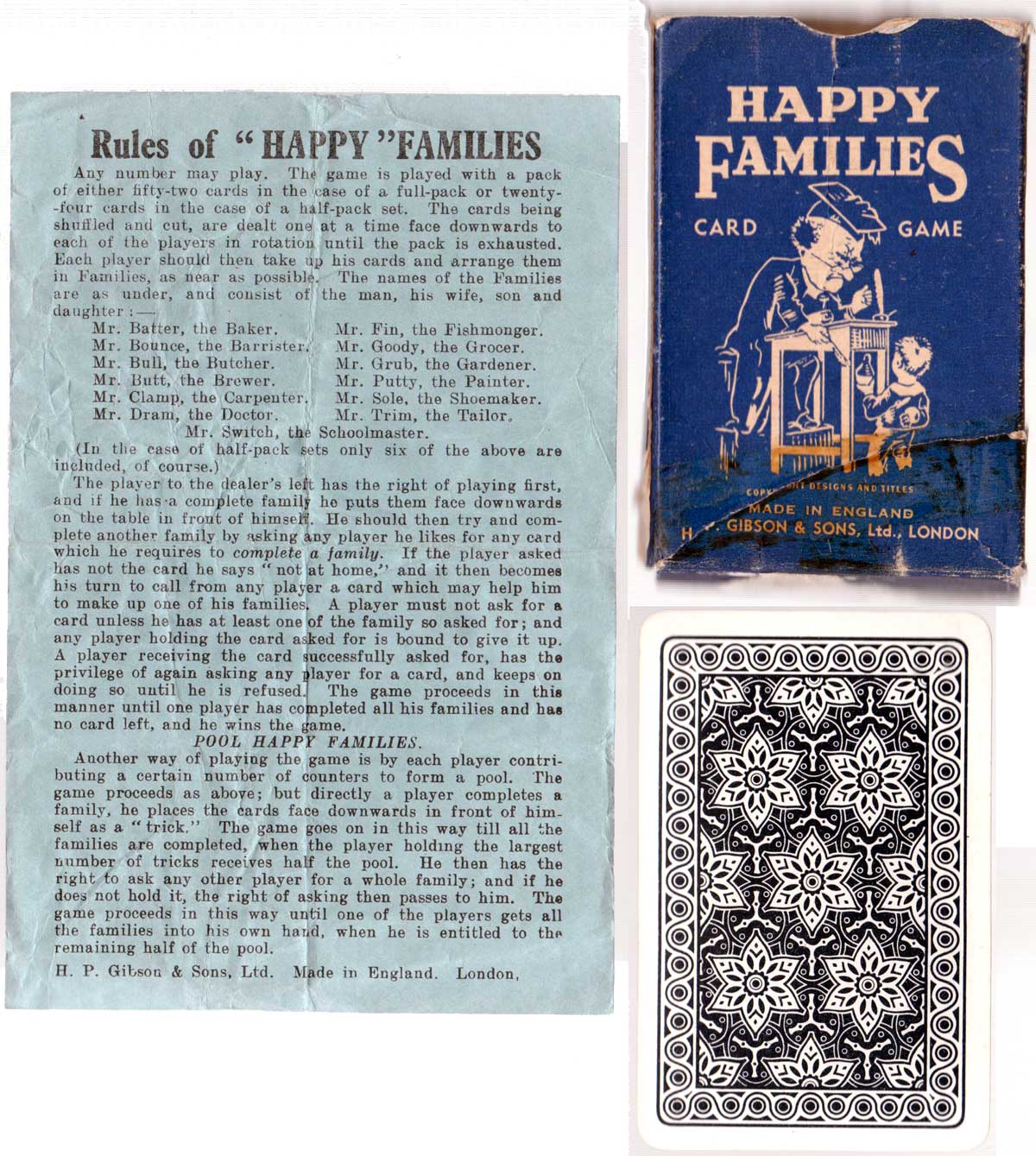
Above: 52 or 24-card version with rules, renamed “Happy Families”.
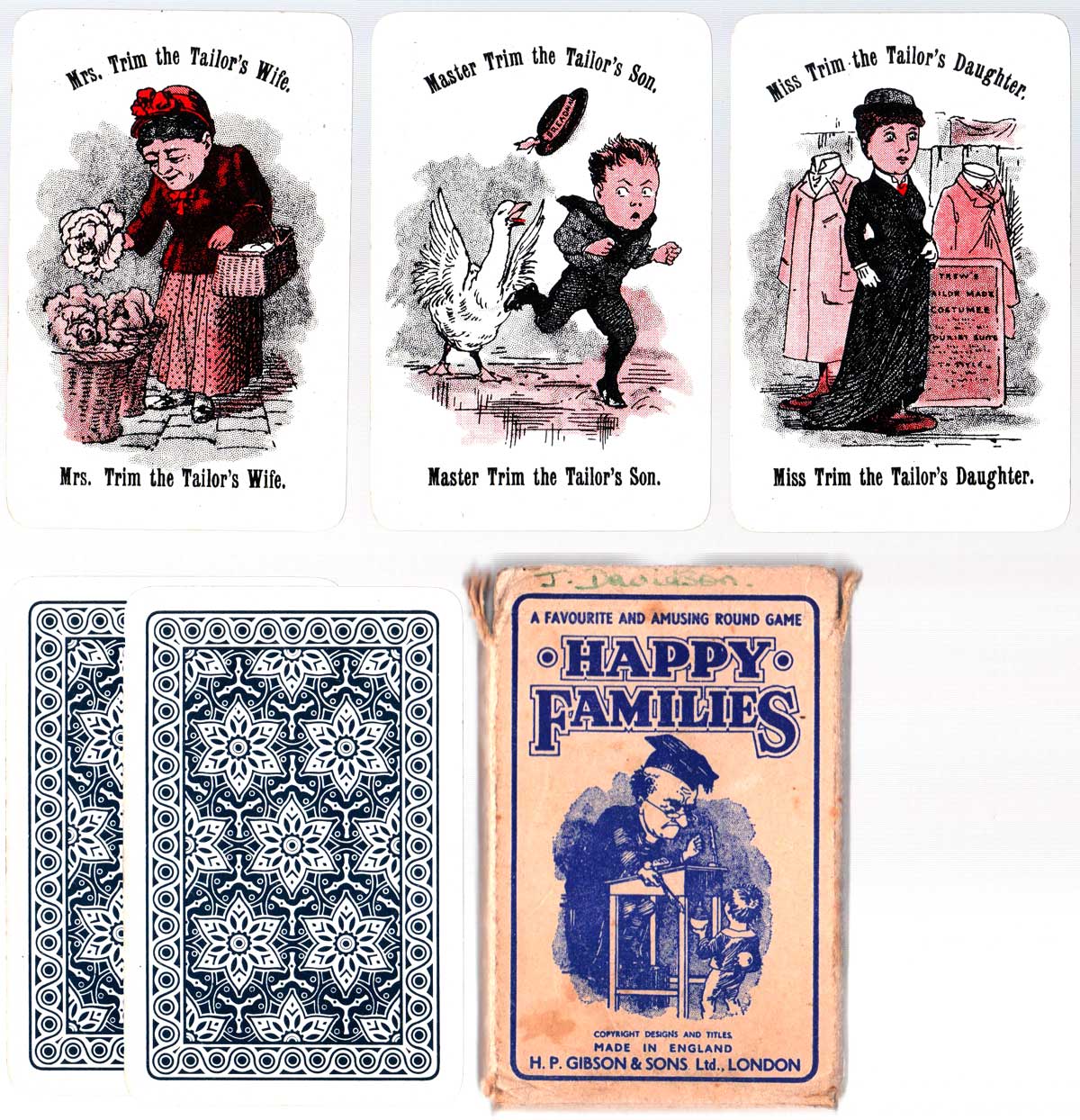
Above: 52-card version.
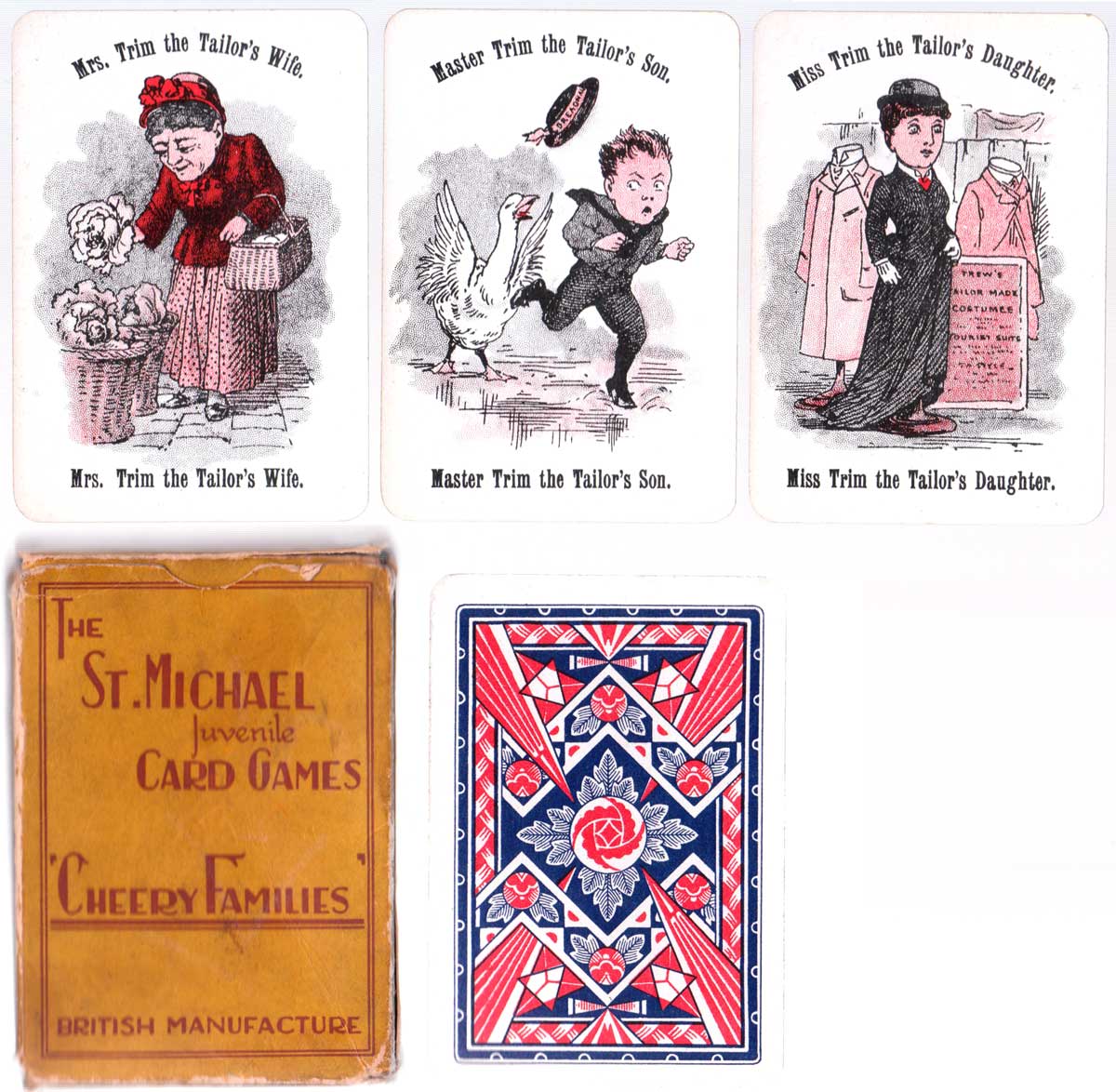
Above: Marks & Spencers edition, 52 cards in box.
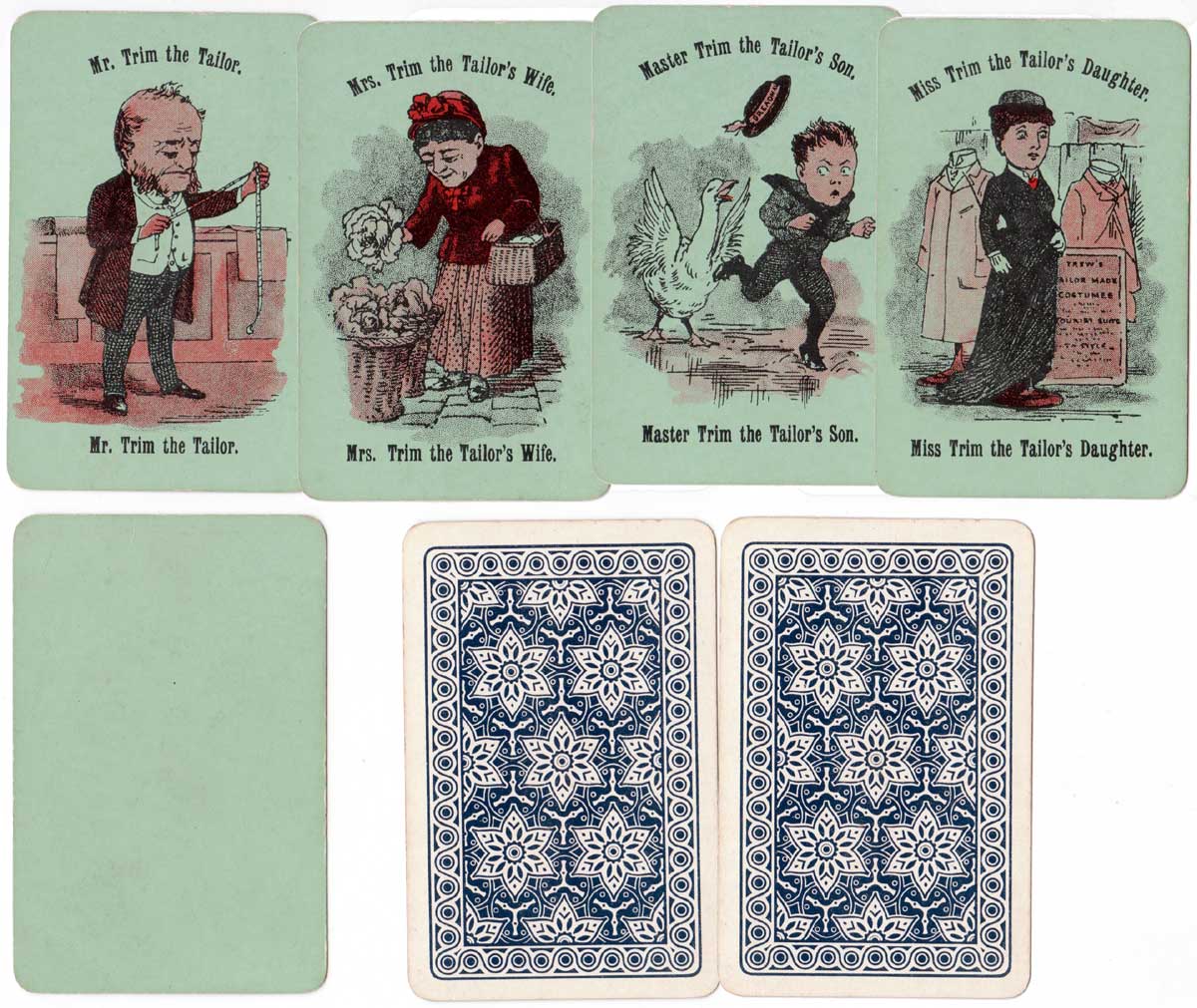
Above: an odd 44-card green version of Cheery Families economy edition printed by De La Rue & Co., Ltd, c.1930s.
By Rex Pitts (1940-2021)
United Kingdom • Member since January 30, 2009
Rex's main interest was in card games, because, he said, they were cheap and easy to get hold of in his early days of collecting. He is well known for his extensive knowledge of Pepys games and his book is on the bookshelves of many.
His other interest was non-standard playing cards. He also had collections of sheet music, music CDs, models of London buses, London Transport timetables and maps and other objects that intrigued him.
Rex had a chequered career at school. He was expelled twice, on one occasion for smoking! Despite this he trained as a radio engineer and worked for the BBC in the World Service.
Later he moved into sales and worked for a firm that made all kinds of packaging, a job he enjoyed until his retirement. He became an expert on boxes and would always investigate those that held his cards. He could always recognize a box made for Pepys, which were the same as those of Alf Cooke’s Universal Playing Card Company, who printed the card games. This interest changed into an ability to make and mend boxes, which he did with great dexterity. He loved this kind of handicraft work.
His dexterity of hand and eye soon led to his making card games of his own design. He spent hours and hours carefully cutting them out and colouring them by hand.

Leave a Reply
Your Name
Just nowRelated Articles

Round the World Happy Families
Round the World Happy Families by Chiefton Products Ltd of Bristol, c.1950s.
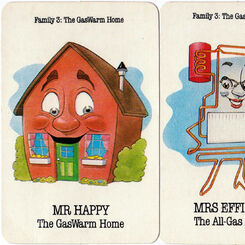
Gas Warm Homes
Gas Warm Homes Happy Families game published by British Gas, c.1980.
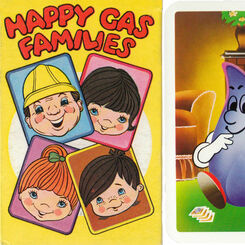
Happy Gas Families
Happy Gas Families published by British Gas, c.1985.

Trades People Happy Families
Happy Families card game depicting trades people from 1920s.

Merry Families
Merry Families #2 (Occupations), by Multum in Parvo Co. Ltd., c.1890.
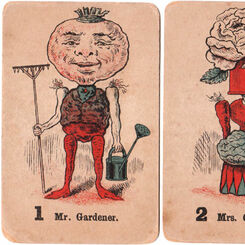
Merry Families
Merry Families published by Multum in Parvo Co., Ltd, from 1896

Spears Happy Families
Spears Happy Families.
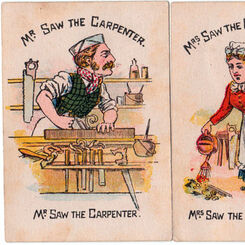
Funny Families
“Funny Families” card game manufactured by Woolley & Co, 1890s.
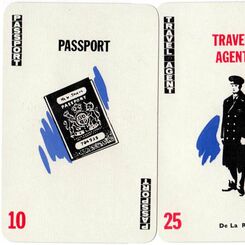
Travel Agent
Travel Agent is a card game designed by Martin A. Foley and manufactured by Thomas de la Rue & Co Lt...
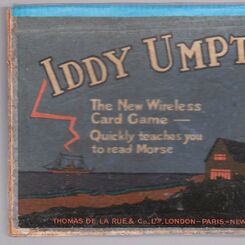
Iddy Umpty
“Iddy Umpty” card game based around learning to read the Morse Code Alphabet. by Thomas de la Rue & ...
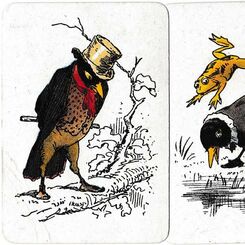
Bread & Honey
A charming Victorian family card game involving Clowns, Queens, Kings, Maids and thirty-seven Blackb...

Spin & Old Maid
Lovely Victorian family card game with illustrations by the famous humorous artist, cartoonist and i...
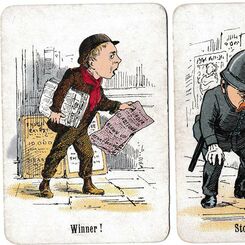
Stop Thief & Snip-Snap
Another late Victorian family card game by Thomas de la Rue & Co Ltd, c.1895 with beautifully illust...
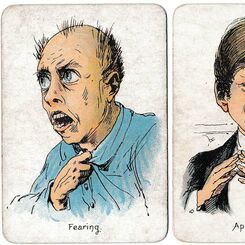
Moods & Faces
“Moods & Faces” round game by Thos de la Rue & Co Ltd,. c.1900.

Tempest
Tempest is a family card game designed by W. Heath Robinson and published by Thomas de la Rue & Co. ...
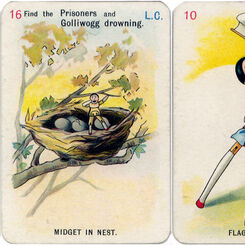
Golliwogg, c.1902
The stories about the Golliwogg and the Dutch dolls were written by Bertha Upton (1849-1912) and ill...
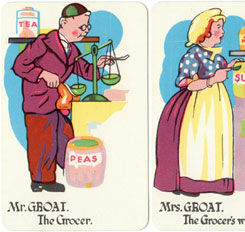
Happy Families, c.1950
Chad Valley “Happy Families” card game, c.1950.

Happy Families, c.1930
“Happy Families” game published by Chad Valley c.1930 drawn in the slightly grotesque style of the V...
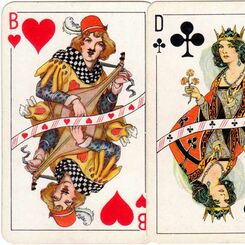
De la Rue for export
Non-standard playing cards produced by De la Rue & Co. (London), c.1930s
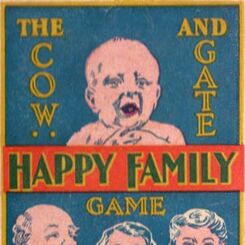
Cow & Gate Happy Family Game
Cow and Gate Happy Family game was issued around 1928 to promote nutrition products.
Most Popular
Our top articles from the past 60 days


 Your comment here. Your comment here. Your comment here. Your comment here. Your comment here. Your comment here. Your comment here. Your comment here. Your comment here. Your comment here. Your comment here. Your comment here. Your comment here. Your comment here. Your comment here. Your comment here. Your comment here. Your comment here. Your comment here. Your comment here. Your comment here. Your comment here. Your comment here. Your comment here. Your comment here. Your comment here. Your comment here. Your comment here. Your comment here. Your comment here. Your comment here. Your comment here.
Your comment here. Your comment here. Your comment here. Your comment here. Your comment here. Your comment here. Your comment here. Your comment here. Your comment here. Your comment here. Your comment here. Your comment here. Your comment here. Your comment here. Your comment here. Your comment here. Your comment here. Your comment here. Your comment here. Your comment here. Your comment here. Your comment here. Your comment here. Your comment here. Your comment here. Your comment here. Your comment here. Your comment here. Your comment here. Your comment here. Your comment here. Your comment here.




















